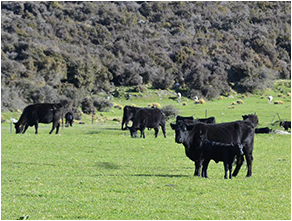Breeding

Late pregnancy nutrition not only influences the survival of cows and calves but it can be the most convenient time to set cows reserves ahead of mating. Having cows settled (and calves settled) leading up to and after weaning improves weaner intakes and post weaning growth rate.
Beef Products > Breeding | Replacements/Finishing | Feed Utilisation
Beef Products > Breeding | Replacements/Finishing | Feed Utilisation
Breeding Products
LUSTRE™
LUSTRE cattle lick, either in loose or block format, is designed as a maintenance input for adult and finishing cattle. Lustre is indicated for cows during droughts and over the winter.
LUSTRE cattle lick, either in loose or block format, is designed as a maintenance input for adult and finishing cattle. Lustre is indicated for cows during droughts and over the winter.
MAGNESIUM
MAGNESIUM Cattle Lick combines trace element delivery with magnesium, and is targeted for use over late pregnancy, in early lactation and again prior to weaning (to settle calves).
MAGNESIUM Cattle Lick combines trace element delivery with magnesium, and is targeted for use over late pregnancy, in early lactation and again prior to weaning (to settle calves).
MAGNET 175™
MAGNET 175 is a loose format free-access magnesium only product designed to achieve a higher intake of elemental magnesium prior to and after calving, than what could be gained from a block.
MAGNET 175 is a loose format free-access magnesium only product designed to achieve a higher intake of elemental magnesium prior to and after calving, than what could be gained from a block.
EZP4 BEET™
Depending on the proportion of fodder beet in the winter diet, and where there is a calculated need for additional phosphate, supplementing with DCP (e.g. on straw or silage) is the recommended first choice. Where this is not possible, or results in an inequitable supply, EZP4 BEET is indicated. As a free access source of phosphate, it can also be used to determine if stock are looking for (more) phosphate.
Depending on the proportion of fodder beet in the winter diet, and where there is a calculated need for additional phosphate, supplementing with DCP (e.g. on straw or silage) is the recommended first choice. Where this is not possible, or results in an inequitable supply, EZP4 BEET is indicated. As a free access source of phosphate, it can also be used to determine if stock are looking for (more) phosphate.
